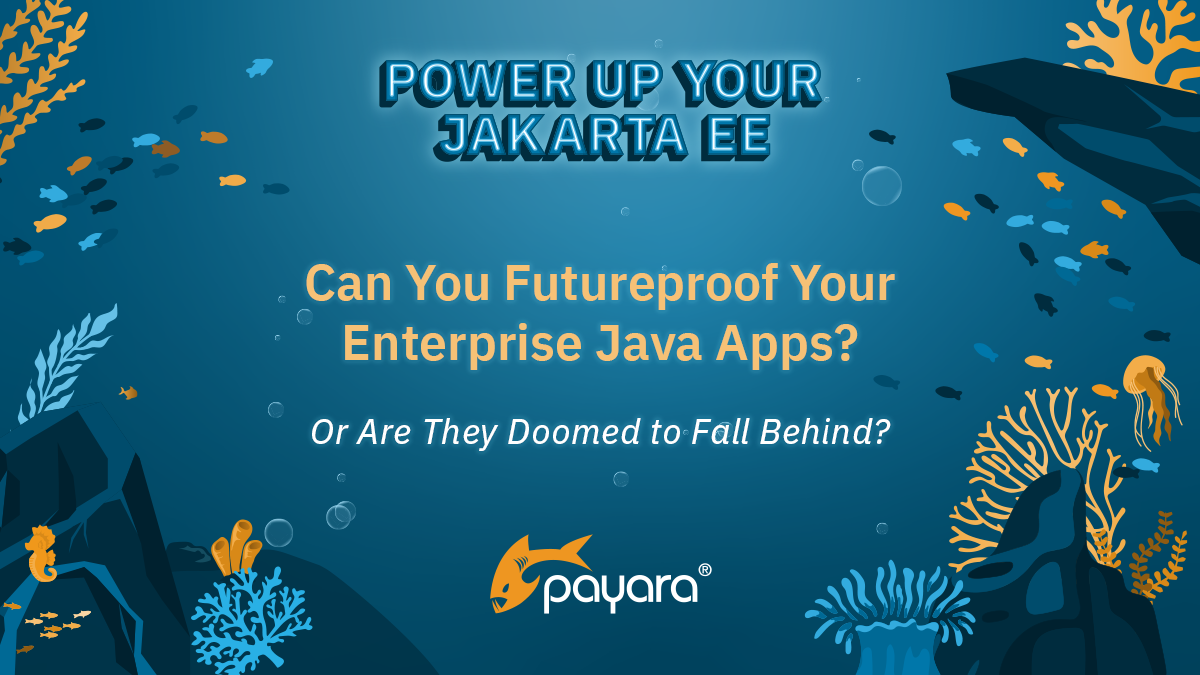 3 minutes
3 minutes
End-of-Life Technology: How to Drive Innovation Without Compromising Stability
When legacy systems approach end-of-life (EOL), enterprise IT teams typically face the choice of moving forward at all costs […]

When it comes to mission-critical applications for production environments, there is a clear shift in software development towards containerization, microservices or the mid-ground between monoliths and microservices: moduliths. These architectural patterns tend to offer better scalability, flexibility and efficiency in cloud native environments. As a result, application runtimes that have traditionally been well suited to monolithic paradigms, such as the GlassFish community project, can struggle to keep pace with modern development practices.
While effective for monolithic applications, the typical architecture of these solutions often lacks the integrations necessary for smooth scaling, automated deployments and full adoption of DevOps tools that characterize modern applications. Therefore, updating existing enterprise Java applications relying on these traditional runtimes by building on Docker and Kubernetes environments can present significant challenges.
In such instances, is there anything that companies can do to futureproof their existing applications or are they doomed to see them become obsolete without being able to do anything?
The struggle of maintaining effective and relevant existing applications running on traditional application servers is real. Here’s some examples of industry leaders sharing their frustrations with real-world limitations when working with modern tech stacks.
Brian Pontarelli, CEO at FusionAuth, says: “As the founder of FusionAuth, an authentication and authorization platform, I have plenty of experience moving applications off GlassFish. We originally built FusionAuth using GlassFish but quickly ran into issues scaling the application and keeping up with demand. The admin console was difficult to work with, and GlassFish lacked integrations with modern DevOps tools.

Mark McShane, Founder at Cupid PR, adds: “One of the ongoing problems with GlassFish is its compatibility—or lack thereof—with modern development practices. As the industry has moved to microservices, containerization, and cloud-native applications, GlassFish has struggled to keep up. Its architecture is good for traditional monolithic applications but not for the modular, agile environments that are becoming the norm.
“We’ve found that integrating GlassFish with Docker and Kubernetes requires a lot of manual configuration and isn’t as slick as with other platforms. This has limited our ability to fully adopt cloud-native practices such as automated scaling, self-healing, and continuous delivery without a lot of custom development and additional infrastructure management.
As illustrated by these industry leaders, traditional runtimes are simply not built for modern development environments like containerization and microservices, which are rapidly becoming the industry standard. The lack of native support for orchestration toolssuch as Kubernetes, as well as for modern cloud native projects like MicroProfile, coupled with sparse integrations with modern DevOps practices, make these conventional runtimes challenging to use them for scalable, resilient applications that can grow with demand.
For businesses looking to futureproof their applications while still leveraging an enterprise Java platform, Payara Micro provides a powerful alternative. Unlike legacy solutions, this lightweight alternative is specifically designed for cloud-native, containerized environments and integrates seamlessly with containerization technologies orchestration platforms, such as Dockers and Kubernetes, respectively.
In addition, Payara Micro offers full support for MicroProfile, helping developers create and deploy cloud-native microservices with built-in features like metrics, fault tolerance, telemetry and configuration management. These elements are complemented by a small footprint and fast startup times, which allow for efficient scaling in production environments.
Finally, Payara Micro is built on the Jakarta EE Web Profile specification, offering a simple, streamlined migration path from GlassFish. In effect, it can easily integrate with your existing enterprise Java infrastructure while offering the tools necessary for future growth.
In the GorillaLogic blog, Adam Gamboa writes: “Payara and Payara Micro seem to be good options for deploying microservices in the Java EE environment because of the features like automatic clustering, health check & monitoring services. If a company using Java EE wants to introduce a micro-service architecture they DO NOT need to change to other frameworks like “spring boot” and throw away all Java EE knowledge. “
For organizations looking to update and improve their legacy enterprise Java applications there is a way forward. Without considerably altering their software, they can move to a highly compatible, modern environment that can support current and future needs: Payara Micro. By moving to this modern, well-tuned application runtime, companies can eliminate many of the headaches that come with using legacy application servers, providing a cloud-native, microservice-ready solution. By opting for Payara Micro, businesses can not only modernize their applications but also lay the foundation for continued innovation and scalability.
Share:
 3 minutes
3 minutes
When legacy systems approach end-of-life (EOL), enterprise IT teams typically face the choice of moving forward at all costs […]
 3 minutes
3 minutes
Working with enterprise Java databases can sometimes feel like swimming upstream. Jakarta EE 11’s Jakarta Data helps developers glide […]
 5 minutes
5 minutes
At Devoxx Belgium 2025, I was able to talk about what happens after you build your container. In theory, […]